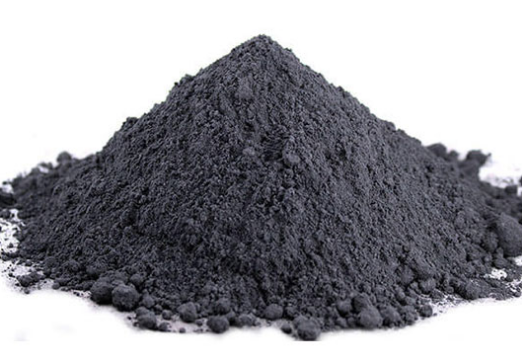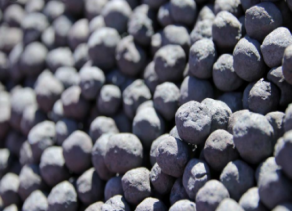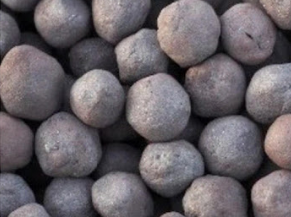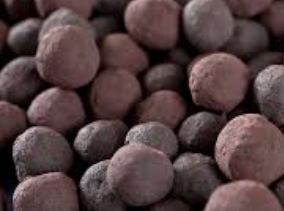Mixing technique
Overview
Mixing technology is the technology of evenly mixing two or more kinds of materials. It includes mixing process and mixing mechanical equipment. The emphasis here is on mixing mechanical assembly.
A mixing machine is a machine that uses mechanical force and gravity to mix two or more materials evenly. It is widely used in various industries and daily life. Mixing machinery can combine a variety of materials into a uniform mixture, such as iron powder and coal powder mixing, iron powder and binder mixing, cement, sand, gravel, and water mixing into concrete wet materials. Also can increase the material contact surface area to promote the chemical reactions. It can also accelerate physical changes, such as the addition of granular solutes to solvents, which can be accelerated by mixing machinery.



Commonly used mixing machinery is divided into five categories: gas and low viscosity liquid mixer, medium or high viscosity liquid and paste mixer, thermoplastic material mixer, powder and granular solid material mixer, powder and a small amount of medium or high viscosity liquid mixer. This article focuses on the mixing of powder with granular solids (or powder) and powder with a small amount of medium to high-viscosity liquids.
Mixing requires that all materials involved in the process be evenly distributed. The degree of mixing can be divided into three states: ideal mixing, random mixing and complete mixing. The mixing degree of various materials in the mixing machine depends on the proportion of the material to be mixed, physical state, characteristics, the type of mixing machine used and the operational duration. For powder mixing or mixing with a small amount of medium and high-viscosity liquid, the speed is much lower than that of liquid mixing, and the mixing degree can only reach random mixing.
With the development of industrial technology, there is a growing of new materials, new technology, mixing machinery, in terms of its hybrid principle, it mainly includes: diffusion, shear mixing and convection mix. In fact, they often accompany each kind of mechanical equipment, and the mix effect is often a result of the combined action of two or more mixing principles.
With the rapid development of industry, the requirements for mixing machines are getting higher and higher. Low energy consumption, environmental protection, high mixing uniformity, reliable operation, and low cost are the constant requirements. Due to the diversity of applied materials, mixers in the required working conditions vary. There is a variety of mixing equipment, this article only concentrates on a few working conditions and a few mixed mechanical equipments.
Requirements for several mixed working conditions:
In view of the various application conditions of mixing equipment, we are going to discuss three industrial areas here, which mainly involve the steel industry, the construction industry, and the casting industry.
1. Steel industry
The applications of the mixer in the iron and steel industry are: oxidized pellets, composite solvent pellets, sinter, metalized pellets, etc.



1.1 Oxidation pellet industry
Along with the development of the oxidized pelletizing process, the introduction of new equipment, the application of high pressure roller mill was gradually increased. The use of high pressure roller mill in the production of oxidized pellets industry. Mixer must be uesed for mixing the iron ore powder and binder, and the binder is usually solid state of bentonite, with content of 1-2%.
The working condition is to mix iron powder and bentonite, its volume component ratio is about 98:2 and the material moisture is about 8%. The fineness of iron ore powder is 200 mesh which accounts for 70-80% or above.
In this process, the mixer may also be used to mix the unqualified material under the system roller screen.
In recent years, there is another new technology in the oxidizing pellet industry, that is, the pelletizing machine. In this process, the mixing machine is an indispensable equipment. The working condition of the mixing machine is to mix iron powder and bentonite, its volume component ratio is about 98:2, and the material moisture is around 8%. The fineness of iron powder is 10mm.
The mixed material must meet the manufacturing requirements.
1.2 Composite solvent pellets
Solute pellet technology is also in constant progress and Japan got this technique at an earlier time. China is still in the initial stage of the development of this process, starting from a high point, a company in Xuanhua has been committed to this research, and has developed its own intellectual property rights of their own process called the 'composite solvent pellet process'.
The materials used in mixers during the composite solvent pellet process are: iron fine powder (83%), hematite powder (10%), limestone powder (4%), straw powder (2%) and bentonite (1%). The moisture content is about 10%. The material fineness is of iron fine powder and hematite powder is 200 mesh accounts for 70-80%, limestone powder is 3mm.
The straw powder was 80 meshes. The mixed material must meet the manufacturing requirements.
1.3 Sinter
The components of sinter are relatively complex, including iron fine powder, coal powder, limestone powder, some furnace ash, steel slag dust and mud, etc. There are two working conditions of sinter: one is mixing and the other is mixing and granulating.
1.4 Metallized pellets
The iron and steel industry metallization pellet various, to sum up, it roughly has the following working conditions:
1.4.1 Direct reduced iron
In the coal-based reduction process, it is necessary to mix iron fine powder, coal powder and appropriate binder. The working condition of the mixer includes iron fine powder (accounting for about 78%), coal powder (18%), binder (5-6%), and the water content of the material is about 5-7%. The iron fine powder is 200 mesh account for 70-80%, the coal powder is 50 mesh mm, the binder viscosity is large.
1.4.2 Lumping of steel dust and mud
After the dust mud ball generated, it is added in the converter of steelmaking cold slag machine. The water content in dried dust mud is generally 2-4%. It is necessary, sometimes, to add some scale and binder. (Might be liquid binder or solid binder) Forming blocks right after mixing.
1.4.3 Metallurgical dust block
Metallurgical dust building block has two kinds of process, one is adding binder, blending and then go cold pressing block. The working condition of mixer and dust mud blocking is about the same. Another process is to use the direct reduction method, by mixing pulverized coal and binder to make blocks. The working process is as the same as mixer. The difference is the bulk density and fineness of the mixure.
The above mixing standard must meet the working conditions of the molding machine. In the direct reduced iron industry, it must also meet the uniform mixing of iron fine powder and pulverized coal.
2. Coal briquette industry
Briquette preparation has a variety of processes, generally by using the briquette process with bonding agent, the process must have a mixing process. This is to say, the coal powder and binder need to be fully mixed after molding. According to the different binders used in briquette, there are two kinds of technique, cold mixing and hot mixing. For instance, the hot mixing is selected when use humic acid and petroleum coke, etc. Generally, the mixing temperature does not exceed 150°C.
3. Construction industry
There are two main working conditions in the application of mixer in the construction industry: one is the "dry mixing" of building sand, lime and a small amount of water, while the other is the "wet mixing" of building sand, lime, gravel and an appropriate amount of water. An important quality index of mortar products is their uniformity. The mixer and the mixing process are the key to achieve high mixing uniformity. If the added materials are not fully mixed, the expected product quality cannot be obtained or unstable. Mixing condition determines the quality of the final product. There are few methods of production, including masonry mortar, plastering mortar, floor mortar, ceramic tile binder.
4. Feed industry
The mixing material used in feed industry is usually multi-component, and the working condition of the mixer is significantly different from that of metallurgy and construction industry, as bulk density of the mixing material is lighter, and the abrasion of the mixing machine itself is lower.




